New Sensing and Radar Absorbing Laminate Combining Structural Damage Detection and Electromagnetic Wave Absorption Properties
Abstract
1. Introduction
2. Materials and Methods
2.1. Production of the Nanostructured Paint
2.2. Strain Sensor Array and Lossy Sheet Realization
2.3. Assembly of the Multifunctional Sensing and EM-Absorbing Laminate
3. Characterizations
3.1. Morphological Characterization
3.2. Eletromechanical Characterization
3.3. Electromagnetic Characterization of the Lossy Sheet
3.4. Design and Testing of the RAS
4. Discussion
5. Conclusions
Author Contributions
Funding
Institutional Review Board Statement
Informed Consent Statement
Data Availability Statement
Conflicts of Interest
References
- Harris, C.E.; Starnes, J.H.; Shuart, M.J. Design and Manufacturing of Aerospace Composite Structures, State-of-the-Art Assessment. J. Aircr. 2002, 39, 545–560. [Google Scholar] [CrossRef]
- Giurgiutiu, V. Smart Materials and Health Monitoring of Composites; Chapter 7.19; Beaumont, P.W.R., Zweben, C.H., Eds.; Elsevier: Oxford, UK, 2018; pp. 364–381. ISBN 978-0-08-100534-7. [Google Scholar]
- Butler, R.; Rhead, A.; Dodwell, T. Optimum Design and Damage Tolerance of Compressively Loaded Laminates. In Comprehensive Composite Materials II; Elsevier Academic Press Inc.: Cambridge, MA, USA, 2018; pp. 118–135. [Google Scholar]
- Rocha, H.; Semprimoschnig, C.; Nunes, J.P. Sensors for Process and Structural Health Monitoring of Aerospace Composites: A Review. Eng. Struct. 2021, 237, 112231. [Google Scholar] [CrossRef]
- Güemes, A. SHM Technologies and Applications in Aircraft Structures. In Proceedings of the 5th International Symposium on NDT in Aerospace, Singapore, 13–15 November 2013. [Google Scholar]
- Smithard, J.; Rajic, N.; van der Velden, S.; Norman, P.; Rosalie, C.; Galea, S.; Mei, H.; Lin, B.; Giurgiutiu, V. An Advanced Multi-Sensor Acousto-Ultrasonic Atructural Health Monitoring System Development and Aerospace Demonstration. Materials 2017, 10, 832. [Google Scholar] [CrossRef]
- Qing, X.; Li, W.; Wang, Y.; Sun, H. Piezoelectric Transducer-Based Structural Health Monitoring for Aircraft Applications. Sensors 2019, 19, 545. [Google Scholar] [CrossRef] [PubMed]
- Winklberger, M.; Kralovec, C.; Schagerl, M. Development of Aircraft Spoiler Demonstrators for Cost-Efficient Investigations of SHM Technologies under Quasi-Realistic Loading Conditions. Aerospace 2021, 8, 320. [Google Scholar] [CrossRef]
- Kamsu-Foguem, B. Knowledge-Based Support in Non-Destructive Testing for Health Monitoring of Aircraft Structures. Adv. Eng. Inform. 2012, 26, 859–869. [Google Scholar] [CrossRef]
- Razali, N.; Sultan, M.T.H.; Jawaid, M. Impact Damage Analysis of Hybrid Composite Materials. In Durability and Life Prediction in Biocomposites, Fibre-Reinforced Composites and Hybrid Composites; Elsevier: Amsterdam, The Netherlands, 2019; pp. 121–132. [Google Scholar]
- Dong, T.; Haftka, R.T.; Kim, N.H. Advantages of Condition-Based Maintenance over Scheduled Maintenance Using Structural Health Monitoring System. In Reliability and Maintenance—An Overview of Cases; IntechOpen: London, UK, 2019; ISBN 1789239524. [Google Scholar]
- Gerdes, M.; Scholz, D.; Galar, D. Effects of Condition-Based Maintenance on Costs Caused by Unscheduled Maintenance of Aircraft. J. Qual. Maint. Eng. 2016, 22, 394–417. [Google Scholar] [CrossRef]
- Fu, H.; Dimitrios, B.; MH, F.A. Structural Health Monitoring Unit for Condition Based Maintenance of Composite Structures. In Proceedings of the International Symposium on Structural Health Monitoring and Nondestructive Testing, Saarbruecken, Germany, 4–5 October 2018. [Google Scholar]
- Dos Reis, J.; Oliveira Costa, C.; Sá da Costa, J. Strain Gauges Debonding Fault Detection for Structural Health Monitoring. Struct. Control Health Monit. 2018, 25, e2264. [Google Scholar] [CrossRef]
- Di Sante, R. Fibre Optic Sensors for Structural Health Monitoring of Aircraft Composite Structures: Recent Advances and Applications. Sensors 2015, 15, 18666–18713. [Google Scholar] [CrossRef]
- Goossens, S.; De Pauw, B.; Geernaert, T.; Salmanpour, M.S.; Sharif Khodaei, Z.; Karachalios, E.; Saenz-Castillo, D.; Thienpont, H.; Berghmans, F. Aerospace-Grade Surface Mounted Optical Fibre Strain Sensor for Structural Health Monitoring on Composite Structures Evaluated against in-Flight Conditions. Smart Mater. Struct. 2019, 28, 065008. [Google Scholar] [CrossRef]
- Qader, İ.N.; Mediha, K.Ö.K.; Dagdelen, F.; Aydoğdu, Y. A Review of Smart Materials: Researches and Applications. El-Cezerî J. Sci. Eng. 2019, 6, 755–788. [Google Scholar]
- Tiwari, A.; Tiwari, A.; Bhatia, A.; Chadha, U.; Kandregula, S.; Selvaraj, S.K.; Bhardwaj, P. Nanomaterials for Electromagnetic Interference Shielding Applications: A Review. Nano 2022, 17, 2230001. [Google Scholar] [CrossRef]
- Sebastian, J.; Schehl, N.; Bouchard, M.; Boehle, M.; Li, L.; Lagounov, A.; Lafdi, K. Health Monitoring of Structural Composites with Embedded Carbon Nanotube Coated Glass Fiber Sensors. Carbon 2014, 66, 191–200. [Google Scholar] [CrossRef]
- Duan, F.; Liao, Y.; Zeng, Z.; Jin, H.; Zhou, L.; Zhang, Z.; Su, Z. Graphene-Based Nanocomposite Strain Sensor Response to Ultrasonic Guided Waves. Compos. Sci. Technol. 2019, 174, 42–49. [Google Scholar] [CrossRef]
- Xu, M.; Wang, Y.; Li, X.; Dong, X.; Zhang, H.; Zhao, H.; Shi, X. Analysis of the Influence of the Structural Parameters of Aircraft Braided-Shield Cable on Shielding Effectiveness. IEEE Trans. Electromagn. Compat. 2019, 62, 1028–1036. [Google Scholar] [CrossRef]
- Kuan, L.; Aijun, L.; Tianbo, W.; Linxiao, L.; Jianyuan, W. Research on Airworthiness Qualification Test Technology of Radiation Emission in Civil Aircraft Flight Control Electronic System. In Proceedings of the 5th China Aeronautical Science and Technology Conference, Wuzhen, Jiaxing, China, November 2021; Springer: Berlin/Heidelberg, Germany, 2022; pp. 951–962. [Google Scholar]
- Solkin, M. Electromagnetic Interference Hazards in Flight and the 5G Mobile Phone: Review of Critical Issues in Aviation Security. Transp. Res. Procedia 2021, 59, 310–318. [Google Scholar] [CrossRef]
- Ahmad, H.; Tariq, A.; Shehzad, A.; Faheem, M.S.; Shafiq, M.; Rashid, I.A.; Afzal, A.; Munir, A.; Riaz, M.T.; Haider, H.T.; et al. Stealth Technology: Methods and Composite Materials—A Review. Polym. Compos. 2019, 40, 4457–4472. [Google Scholar] [CrossRef]
- Tümen, K.U.; Kıvrak, B.; Alkurt, F.Ö.; Akyol, M.; Karaaslan, M.; Ekicibil, A. Synthesis and Characterization of Nanoparticles Reinforced Epoxy Based Advanced Radar Absorbing Composites. J. Mater. Sci. Mater. Electron. 2021, 32, 28007–28018. [Google Scholar] [CrossRef]
- Taufiq, A.; Ulfawanti Intan Subadra, S.; Hidayat, N.; Sunaryono, S.; Hidayat, A.; Handoko, E.; Munasir, M.; Alaydrus, M.; Chuenchom, L. Eco-Friendly Fabrication of Fe3O4/MWCNT/ZnO Nanocomposites from Natural Sand for Radar Absorbing Materials. Int. J. Nanosci. Nanotechnol. 2021, 17, 41–53. [Google Scholar]
- Smitha, P.; Singh, I.; Najim, M.; Panwar, R.; Singh, D.; Agarwala, V.; Das Varma, G. Development of Thin Broad Band Radar Absorbing Materials Using Nanostructured Spinel Ferrites. J. Mater. Sci. Mater. Electron. 2016, 27, 7731–7737. [Google Scholar] [CrossRef]
- Fortunato, M.; Bellagamba, I.; Marra, F.; Tamburrano, A.; Sarto, M.S. Development and Characterization of a Piezoresistive Polyurethane/GNP Coating for Strain Sensing Applications. In Proceedings of the 2020 IEEE 20th International Conference on Nanotechnology (IEEE-NANO), virtual, 29–31 July 2020; pp. 176–179. [Google Scholar]
- Sarto, M.S.; Tamburrano, A.; Proietti, A.; Rinaldi, A.; Paliotta, L. Water-Based Piezoresistive Conductive Polymeric Paint Containing Graphene for Electromagnetic and Sensor Applications. U.S. Patent 15/736,701, 21 June 2018. [Google Scholar]
- Nauman, S. Piezoresistive Sensing Approaches for Structural Health Monitoring of Polymer Composites—A Review. Eng 2021, 2, 197–226. [Google Scholar] [CrossRef]
- Sarto, M.S.; D’Aloia, A.G.; Tamburrano, A.; de Bellis, G. Synthesis, Modeling, and Experimental Characterization of Graphite Nanoplatelet-Based Composites for EMC Applications. IEEE Trans. Electromagn. Compat. 2012, 54, 17–27. [Google Scholar] [CrossRef]
- Proietti, A.; Rinaldi, A.; Tamburrano, A.; de Bellis, G.; Sarto, M.S. Wideband Radar Absorbing Panels with Lossy Multilayer Graphene and Carbon Nanofiber-Based Coating. In Proceedings of the IEEE International Symposium on Electromagnetic Compatibility, Ottawa, ON, Canada, 25–29 July 2016; Institute of Electrical and Electronics Engineers Inc.: New York, NY, USA, 2016; Volume 2016, pp. 239–244. [Google Scholar]
- Kwon, H.; Jang, M.S.; Yun, J.M.; Park, Y.; Shin, C.; Yang, J.; Kim, C.G. Design and Verification of Simultaneously Self-Sensing and Microwave-Absorbing Composite Structures Based on Embedded SiC Fiber Network. Compos. Struct. 2021, 261, 113286. [Google Scholar] [CrossRef]
- Bai, Y.; Qin, F.; Lu, Y. Lightweight Ni/CNT Decorated Melamine Sponge with Sensitive Strain Sensing Performance for Ultrahigh Electromagnetic Absorption in Both GHz and THz Bands. Chem. Eng. J. 2022, 429, 132393. [Google Scholar] [CrossRef]
- Dai, Y.; Wu, X.; Liu, Z.; Zhang, H.b.; Yu, Z.Z. Highly Sensitive, Robust and Anisotropic MXene Aerogels for Efficient Broadband Microwave Absorption. Compos. B Eng. 2020, 200, 108263. [Google Scholar] [CrossRef]
- Sarto, M.; de Bellis, G.; Tamburrano, A.; D’Aloia, A.G.; Marra, F. Graphene-Based Nanocomposites with Tailored Electrical, Electromagnetic, and Electromechanical Properties. In Graphene Science Handbook: Electrical and Optical Properties; Aliofkhazraei, M., Ali, N., Milne, W.I., Ozkan, C.S., Mitura, S., Gervasoni, J.L., Eds.; CRC Press: Boca Raton, FL, USA, 2016; pp. 507–532. [Google Scholar]
- ASTM D790-17; Standard Test Methods for Flexural Properties of Unreinforced and Reinforced Plastics and Electrical Insulating Materials. ASTM Internationa: West Conshohocken, PA, USA, 2017; Volume 8.
- Tester, P.A. Standard Test Method for Measuring Relative Complex Permittivity and Relative Magnetic Permeability of Solid Materials at Microwave Frequencies; ASTM International: West Conshohocken, PA, USA, 2022; Volume 10. [Google Scholar]
- Tamburrano, A.; Marra, F.; Lecini, J.; Sarto, M.S. Complex Permittivity Extraction Method of a Thin Coating: Em Properties of a Graphene-Based Film on a Composite Layer. IEEE Int. Symp. Electromagn. Compat. 2018, 602–607. [Google Scholar] [CrossRef]
- Marra, F.; Lecini, J.; Tamburrano, A.; Pisu, L.; Sarto, M.S. Broadband Electromagnetic Absorbing Structures Made of Graphene/Glass-Fiber/Epoxy Composite. IEEE Trans. Microw. Theory Tech. 2020, 68, 590–601. [Google Scholar] [CrossRef]
- Engin, A.E. Extraction of Dielectric Constant and Loss Tangent Using New Rapid Plane Solver and Analytical Debye Modeling for Printed Circuit Boards. IEEE Trans. Microw. Theory Tech. 2010, 58, 211–219. [Google Scholar] [CrossRef]
- Rinaldi, A.; Proietti, A.; Tamburrano, A.; Sarto, M.S. Graphene-Coated Honeycomb for Broadband Lightweight Absorbers. IEEE Trans. Electromagn. Compat. 2018, 60, 1454–1462. [Google Scholar] [CrossRef]
- D’Aloia, A.G.; Marra, F.; Tamburrano, A.; de Bellis, G.; Sarto, M.S. Electromagnetic Absorbing Properties of Graphene-Polymer Composite Shields. Carbon 2014, 73, 175–184. [Google Scholar] [CrossRef]
- Pattabhiraman, S.; Gogu, C.; Kim, N.H.; Haftka, R.; Bes, C. Synchronizing Condition-Based Maintenance with Necessary Scheduled Maintenance. In Proceedings of the 53rd AIAA/ASME/ASCE/AHS/ASC Structures, Structural Dynamics and Materials Conference 20th AIAA/ASME/AHS Adaptive Structures Conference 14th AIAA, Honolulu, HI, USA, 23–26 April 2012; p. 1596. [Google Scholar]

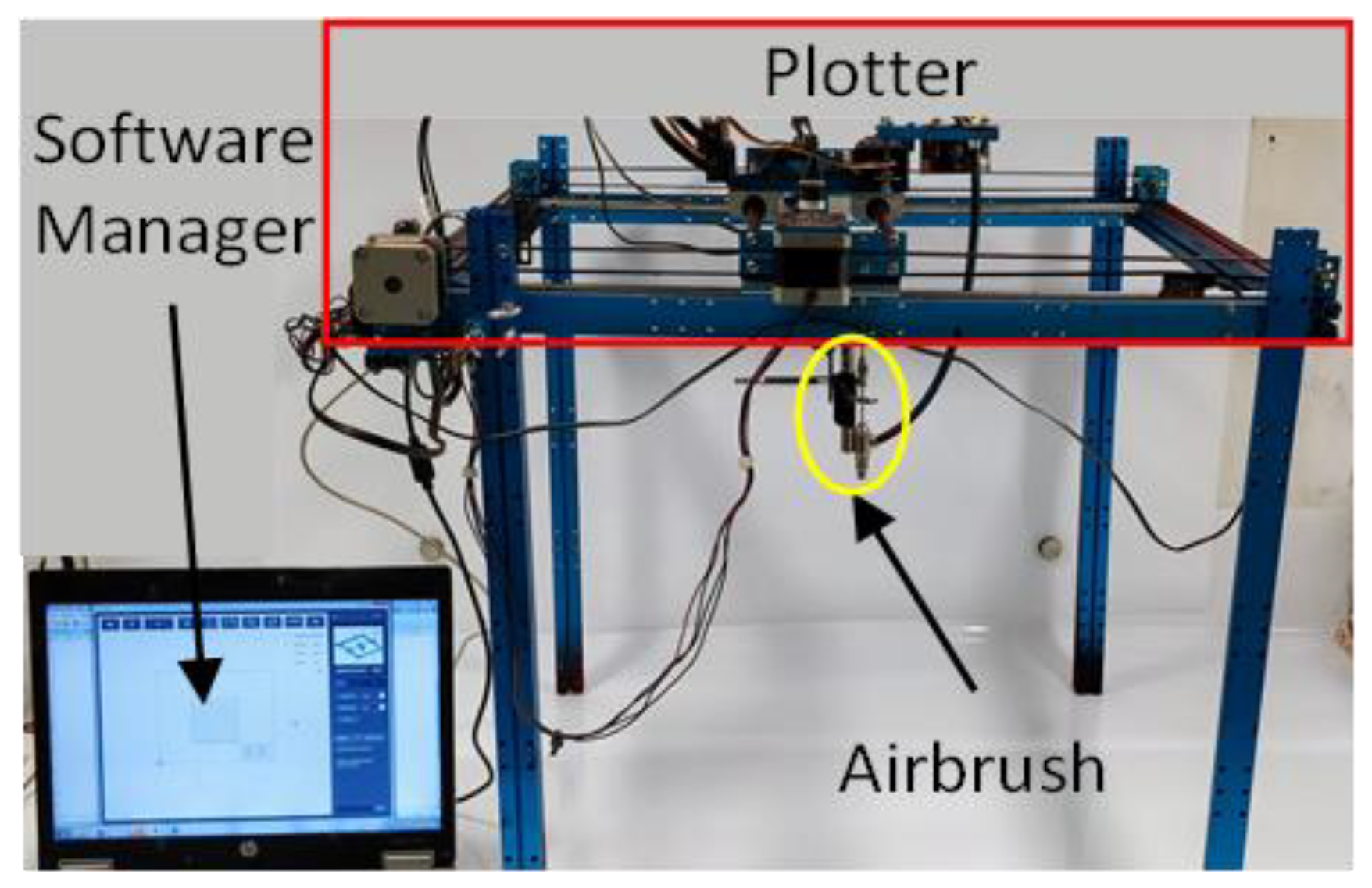
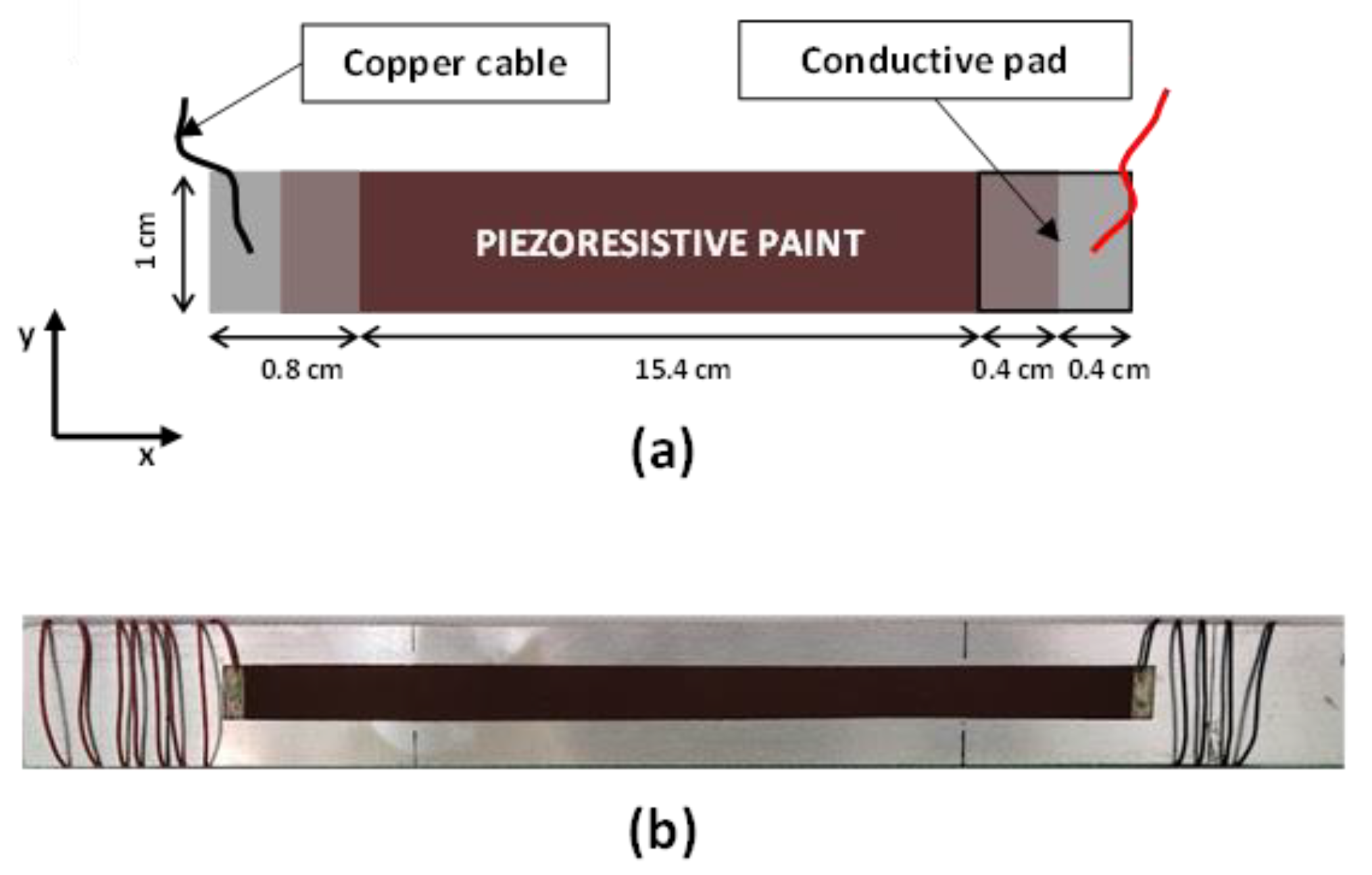
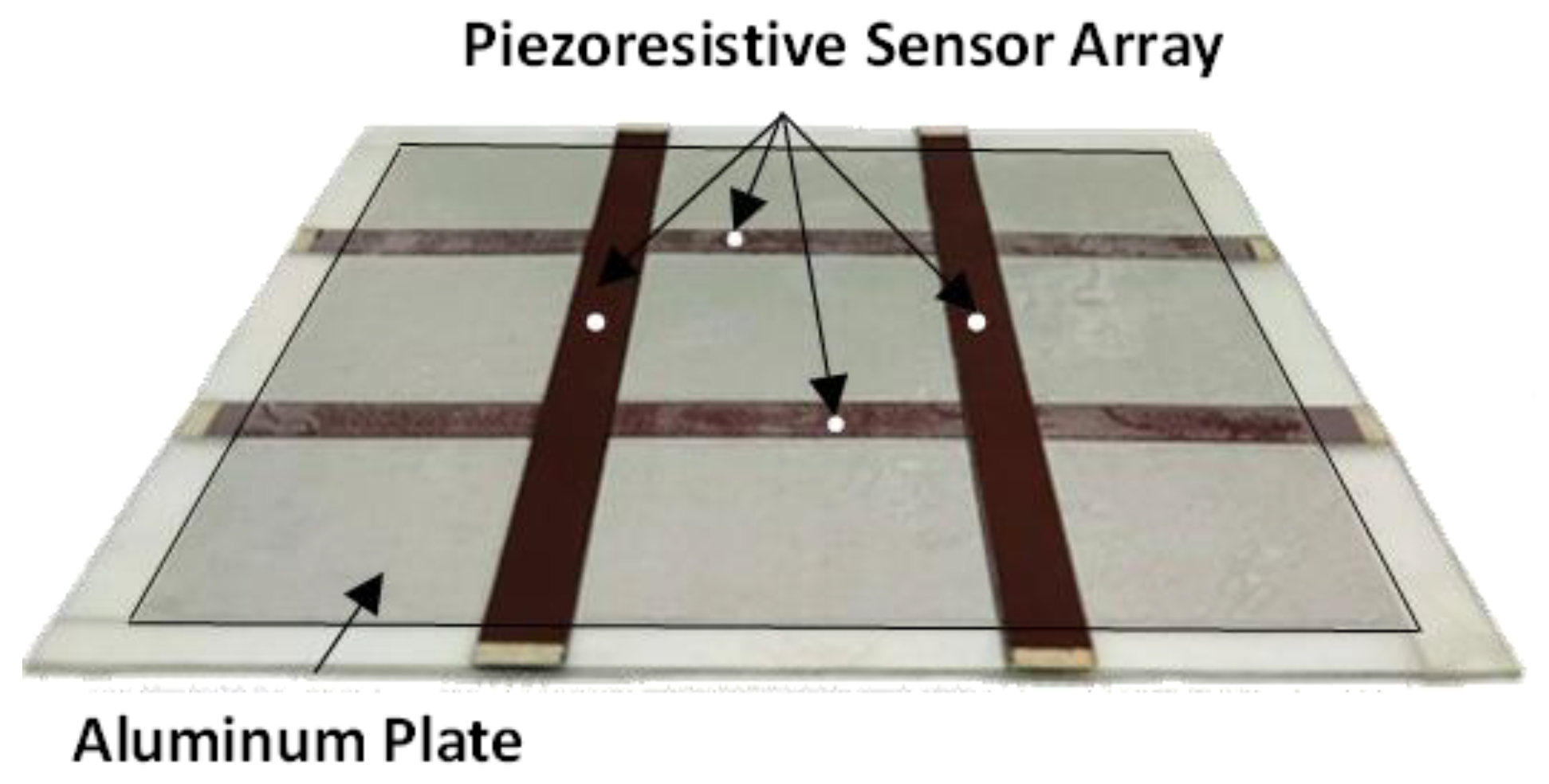

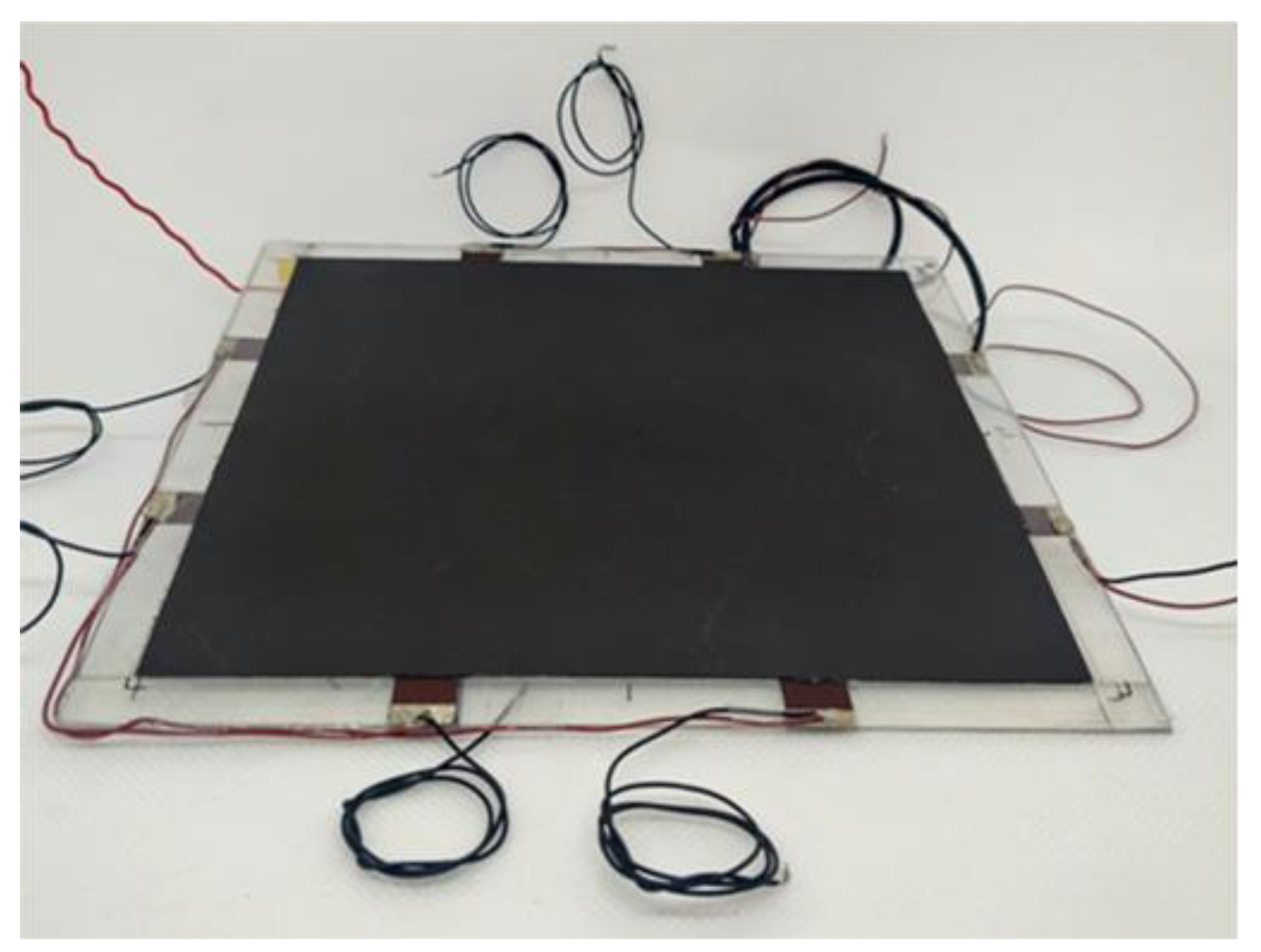
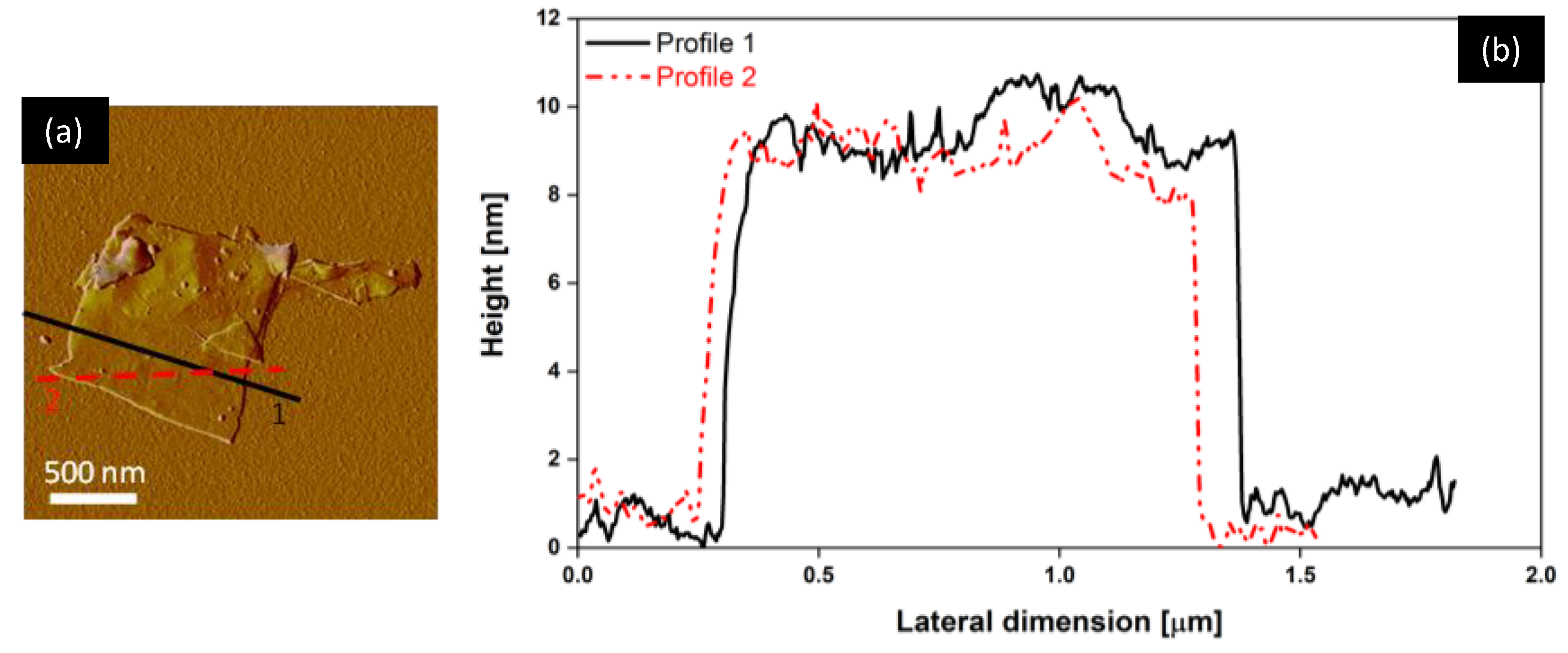
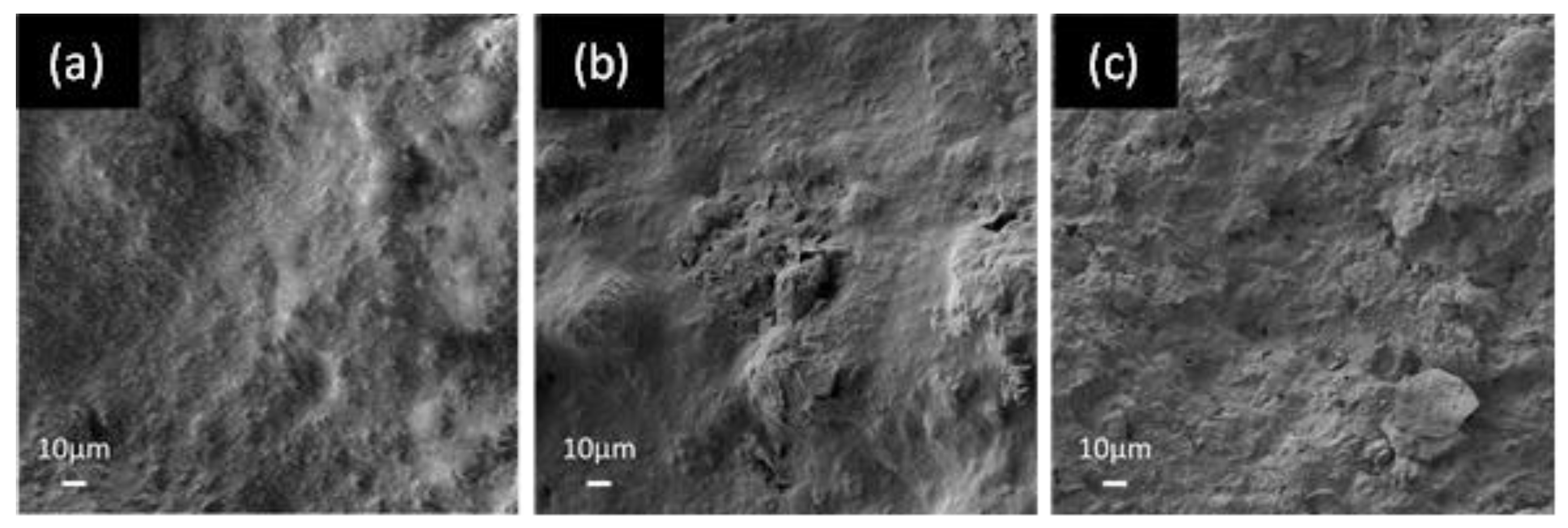
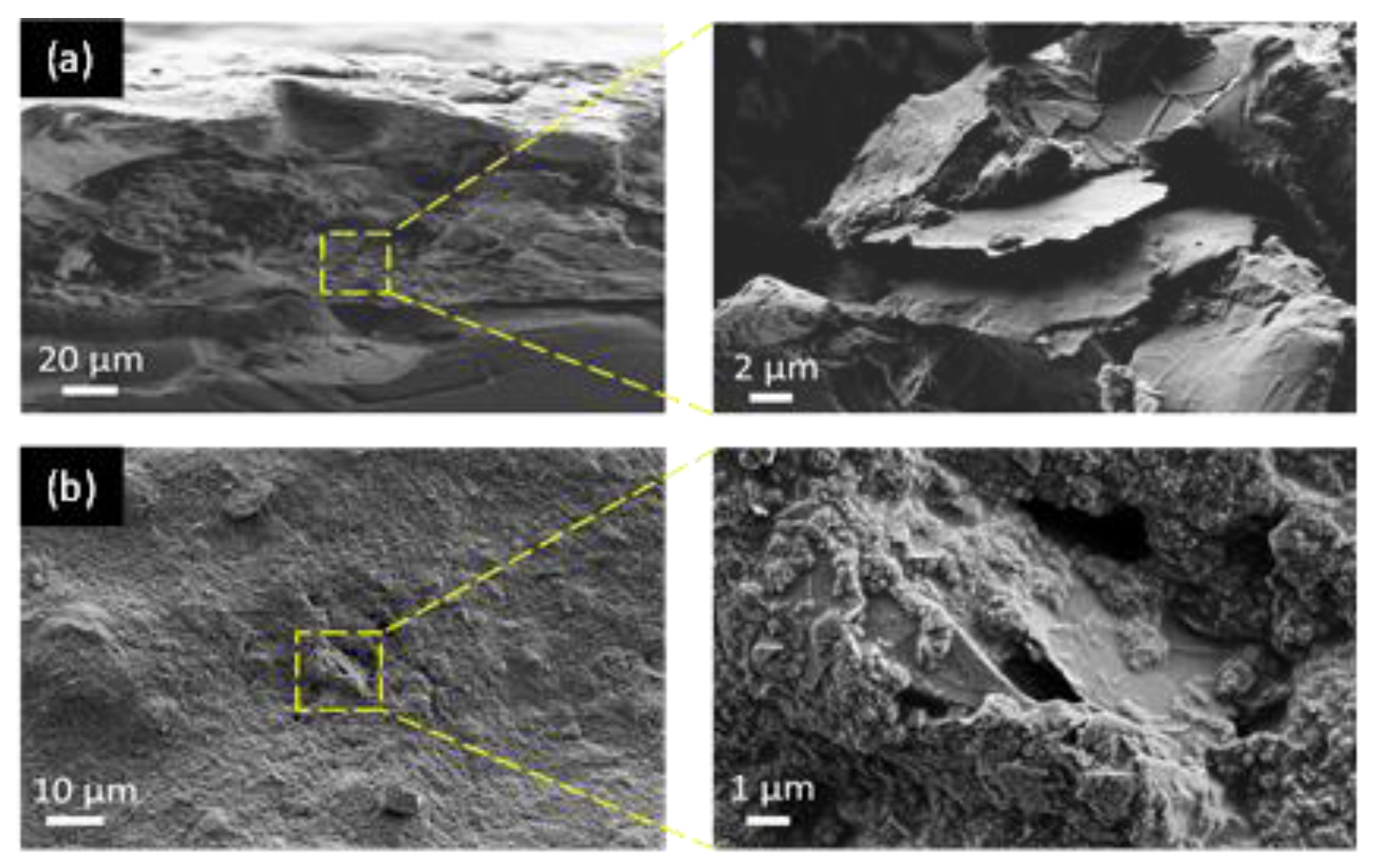
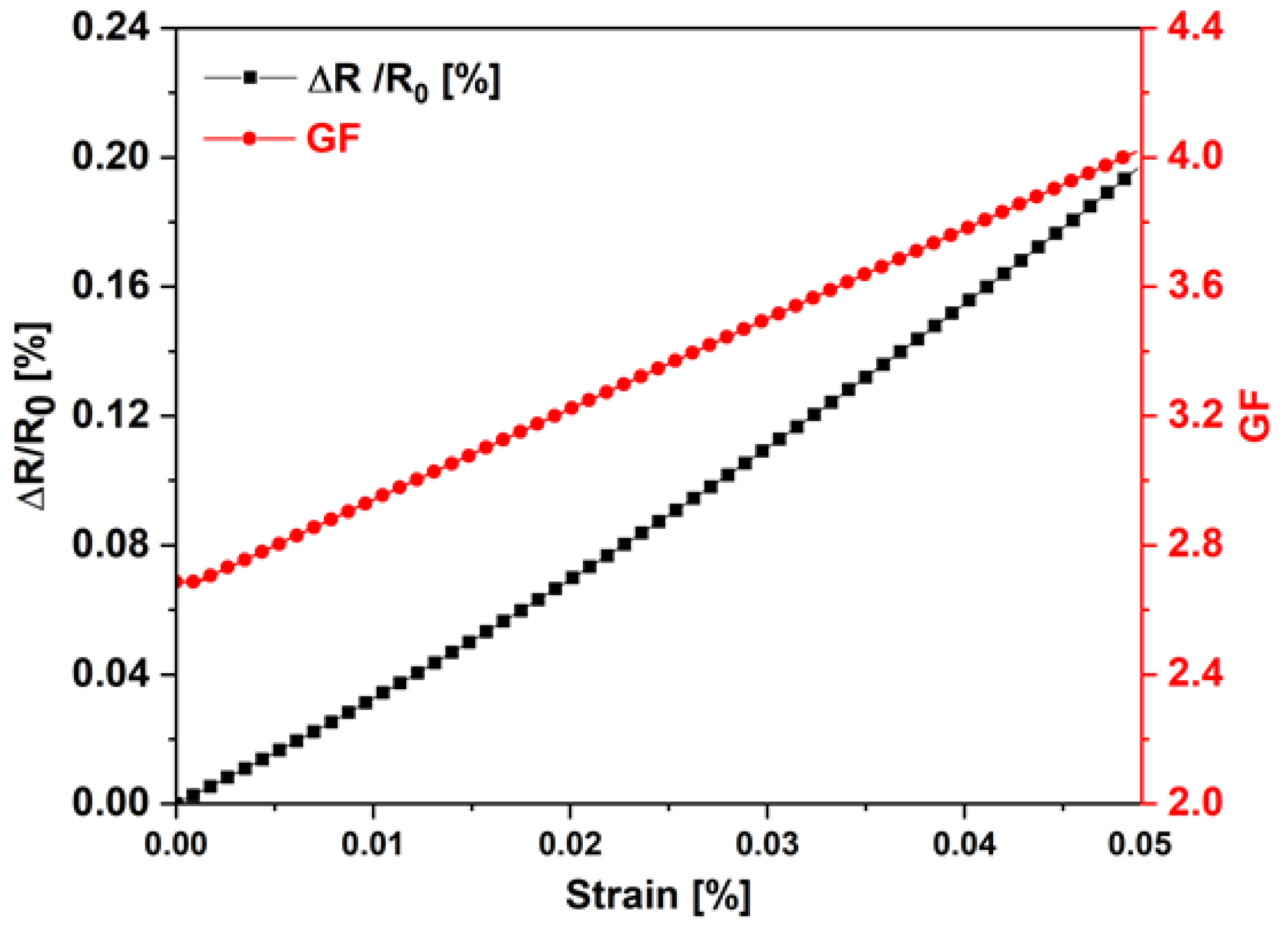

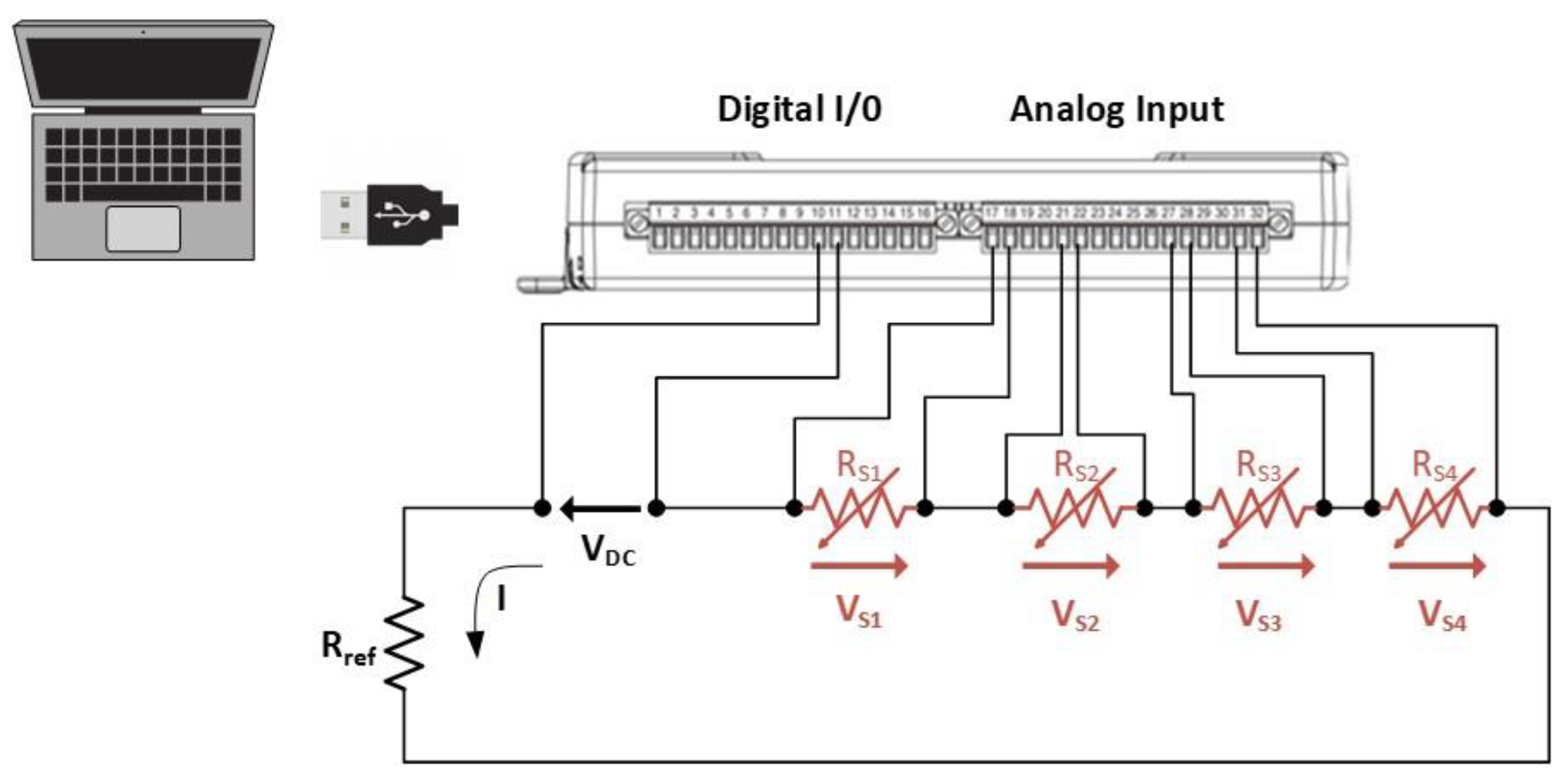

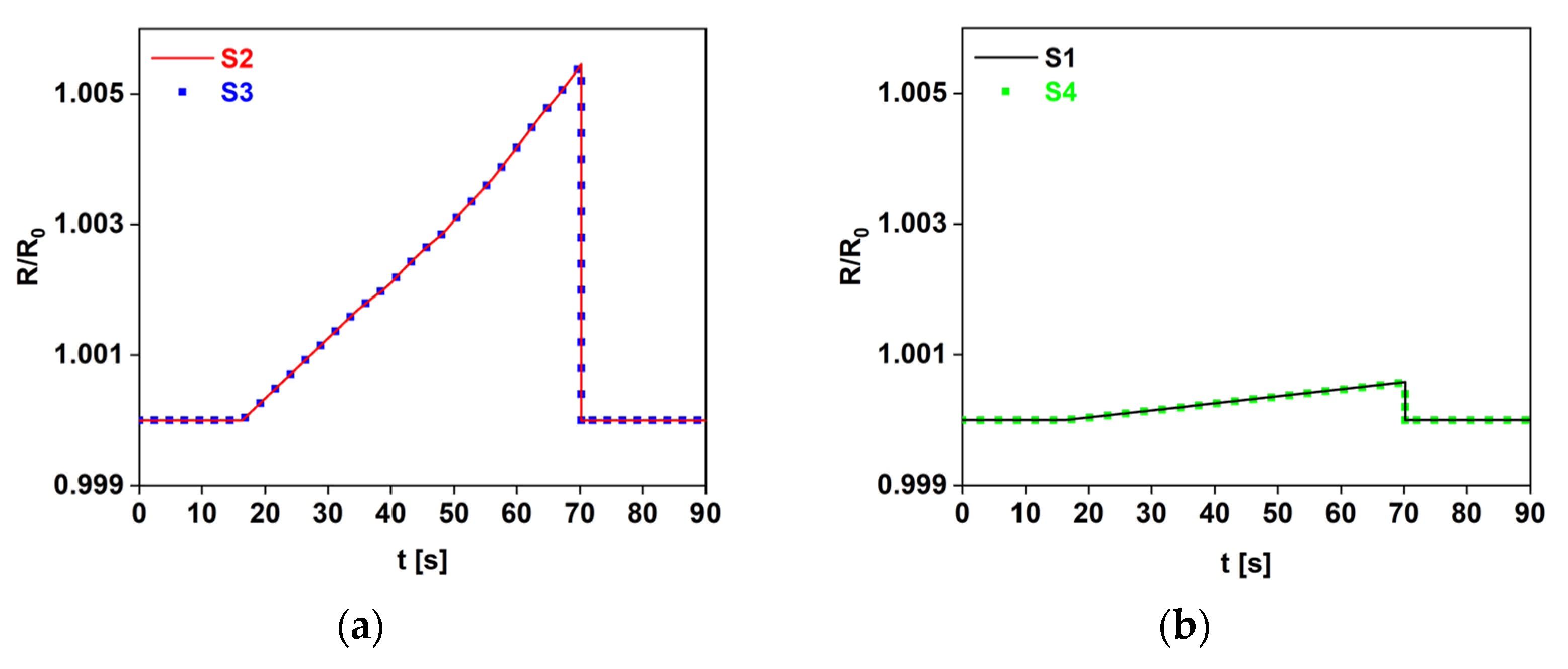
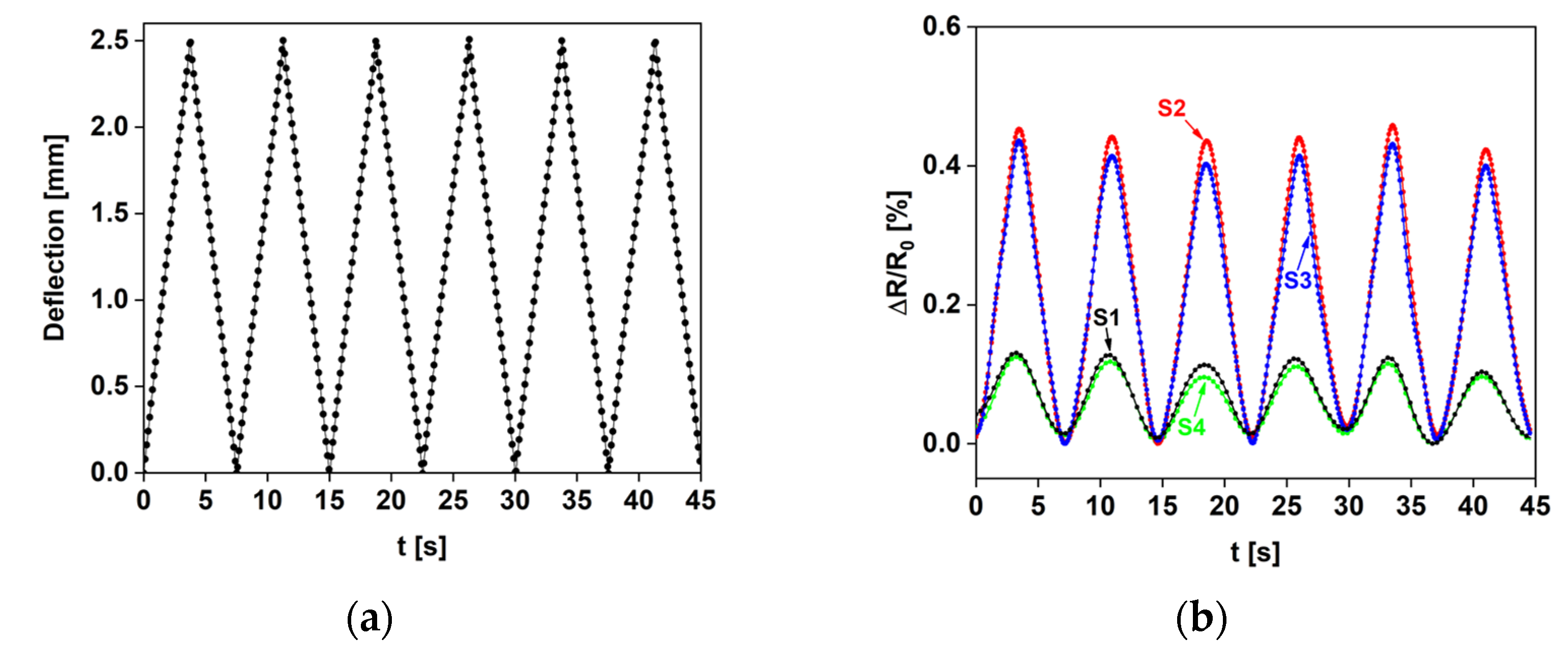
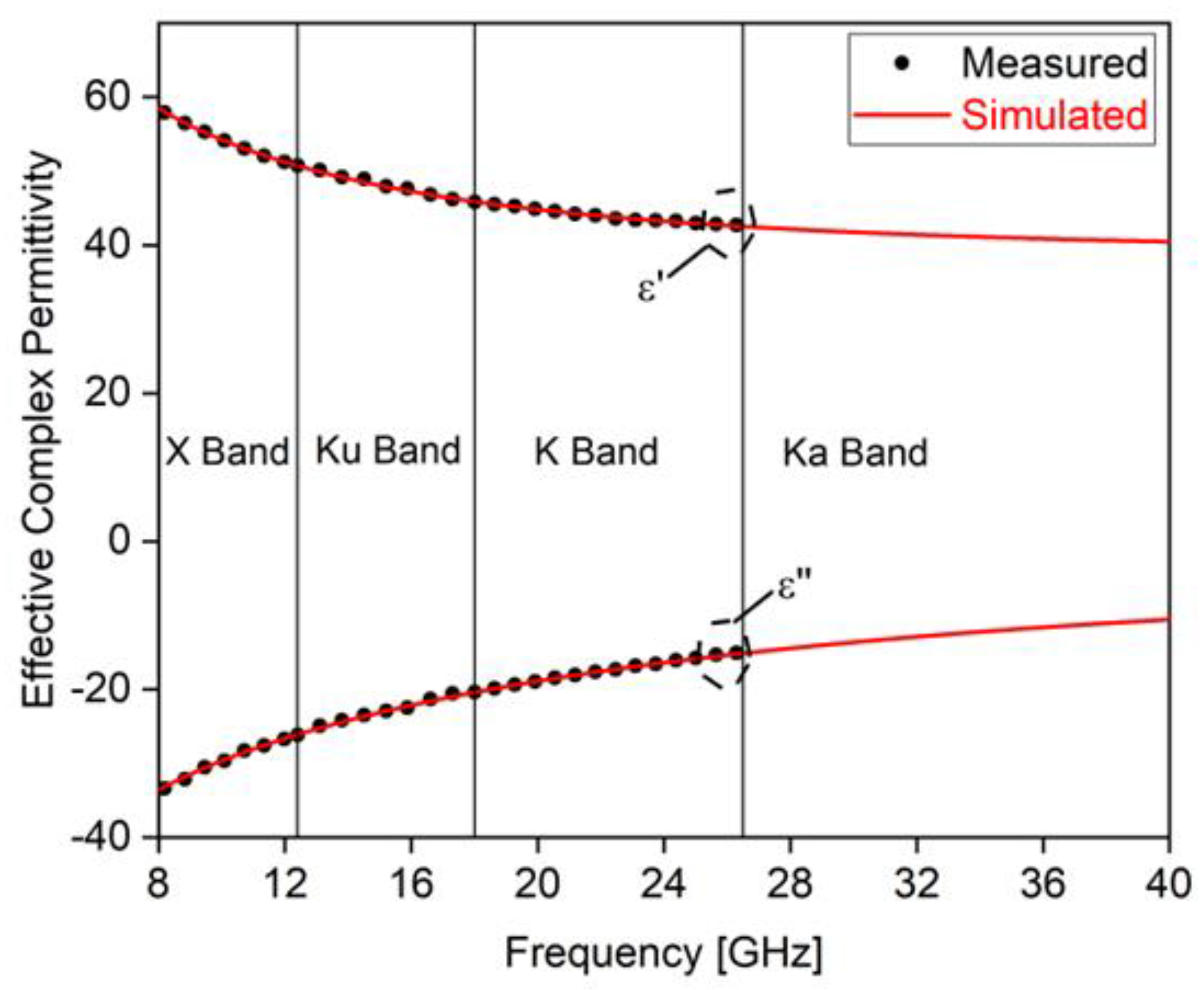


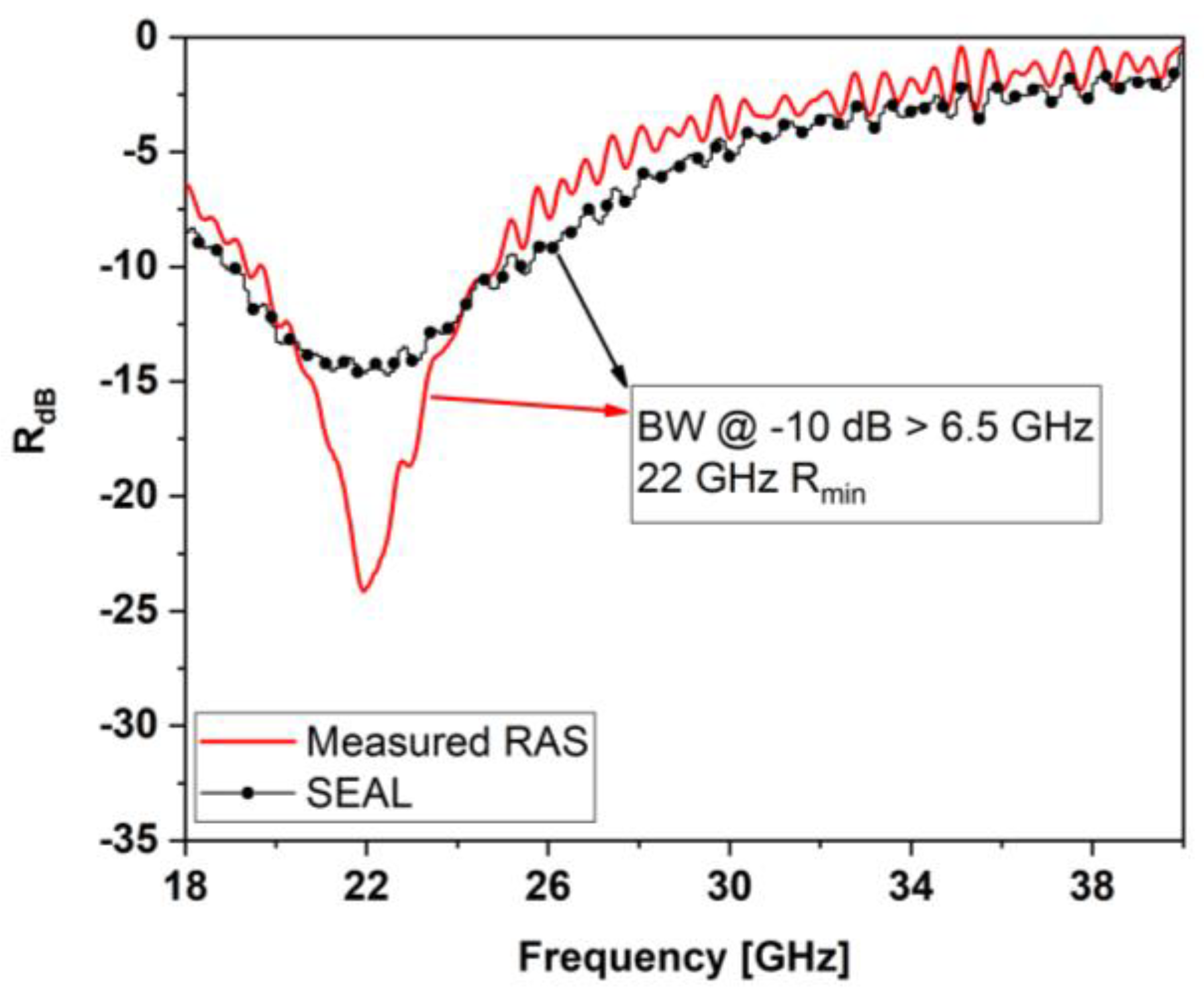
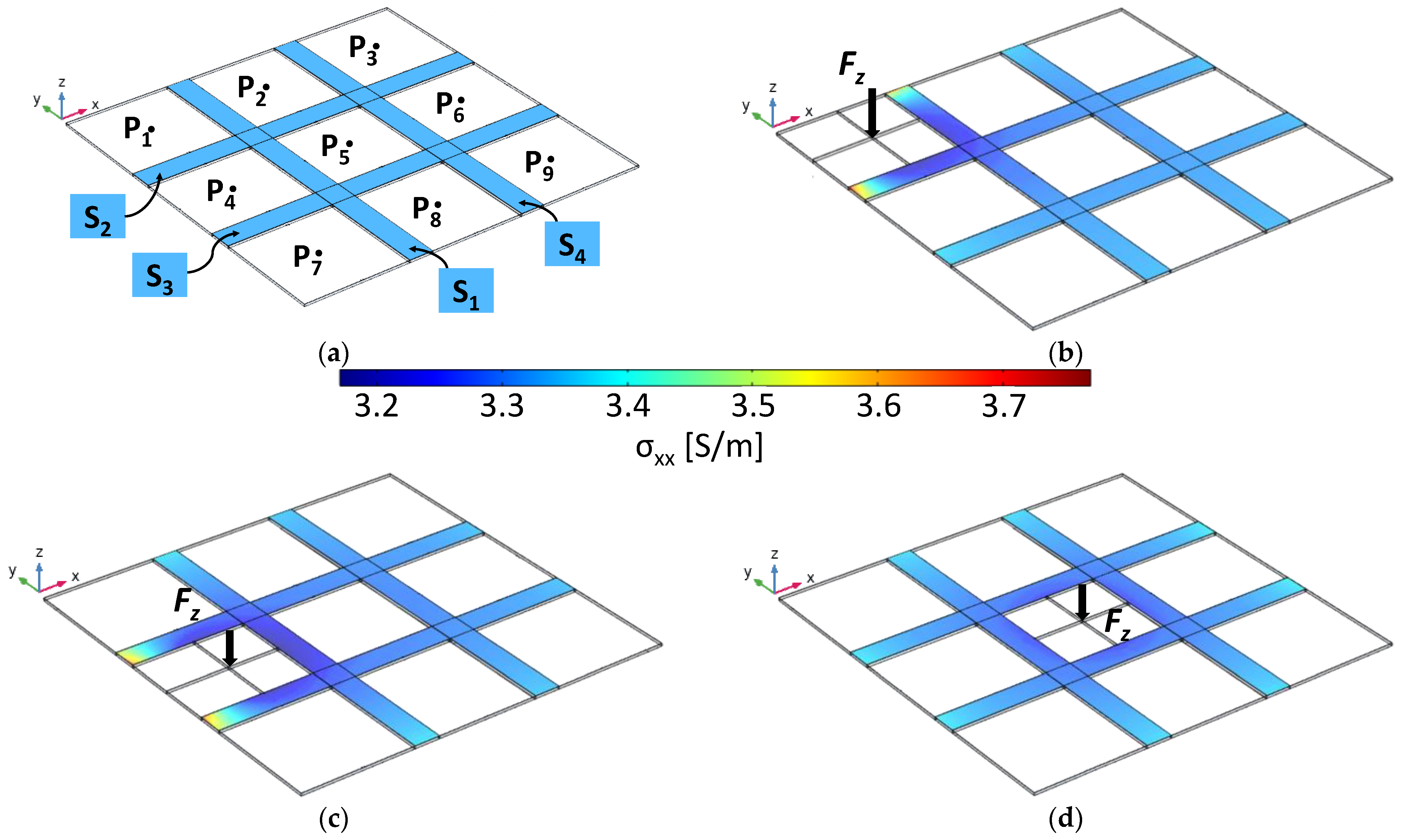
| Paper | Sensing and Electromagnetic Absorbing Properties | |||||||
|---|---|---|---|---|---|---|---|---|
| Ref. | Year | Functional Materials | Electromechanical Test | Max Sensitivity (Gauge Factor) | Max Strain | Frequency Band [GHz] | Min. Reflection Coefficient [dB] | Overall Thickness [mm] |
| [33] | 2021 | SiC fiber network embedded composite | Impact | n.a. (8.25 for SiC fibers) | n.a. | 8.2–12.4 | −38.7 (@9.73 GHz) | 3.132 |
| [34] | 2022 | Ni/CNT decorated Melamine sponge | Tensile | 3.06 | 40% | 2–18 | −25.7 (average value) | 2 |
| [35] | 2020 | MXene/polymide aerogel | Compression | 1.5 | 50% | 3.9–18 | −41.8 (@ ~6 GHz) | 4 |
| This Work | PU/GNPs paint | Bending | 4 | 0.05% | 18–40 | −15 (@ 22 GHz) | 0.870 | |
| Point | ΔRS1 (Ω) | ΔRS2 (Ω) |
|---|---|---|
| P1 | 1372.2 | 1208.0 |
| P4 | 1082.5 | 1068.5 |
| P5 | 749.04 | 679.65 |
Publisher’s Note: MDPI stays neutral with regard to jurisdictional claims in published maps and institutional affiliations. |
© 2022 by the authors. Licensee MDPI, Basel, Switzerland. This article is an open access article distributed under the terms and conditions of the Creative Commons Attribution (CC BY) license (https://creativecommons.org/licenses/by/4.0/).
Share and Cite
Cozzolino, F.; Marra, F.; Fortunato, M.; Bellagamba, I.; Pesce, N.; Tamburrano, A.; Sarto, M.S. New Sensing and Radar Absorbing Laminate Combining Structural Damage Detection and Electromagnetic Wave Absorption Properties. Sensors 2022, 22, 8470. https://doi.org/10.3390/s22218470
Cozzolino F, Marra F, Fortunato M, Bellagamba I, Pesce N, Tamburrano A, Sarto MS. New Sensing and Radar Absorbing Laminate Combining Structural Damage Detection and Electromagnetic Wave Absorption Properties. Sensors. 2022; 22(21):8470. https://doi.org/10.3390/s22218470
Chicago/Turabian StyleCozzolino, Federico, Fabrizio Marra, Marco Fortunato, Irene Bellagamba, Nicola Pesce, Alessio Tamburrano, and Maria Sabrina Sarto. 2022. "New Sensing and Radar Absorbing Laminate Combining Structural Damage Detection and Electromagnetic Wave Absorption Properties" Sensors 22, no. 21: 8470. https://doi.org/10.3390/s22218470
APA StyleCozzolino, F., Marra, F., Fortunato, M., Bellagamba, I., Pesce, N., Tamburrano, A., & Sarto, M. S. (2022). New Sensing and Radar Absorbing Laminate Combining Structural Damage Detection and Electromagnetic Wave Absorption Properties. Sensors, 22(21), 8470. https://doi.org/10.3390/s22218470










